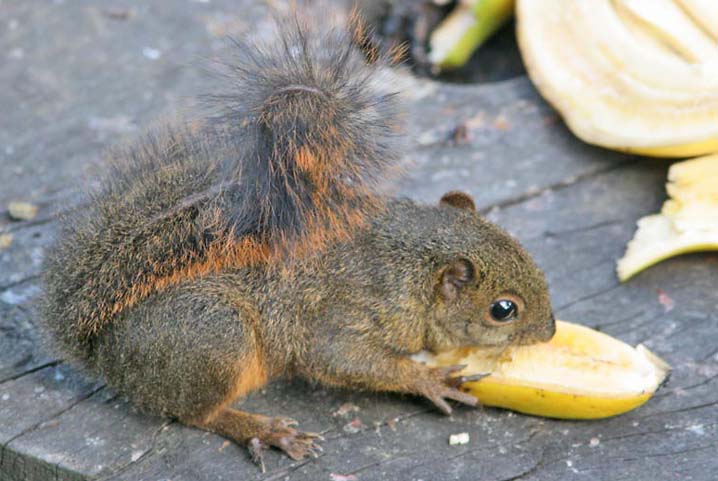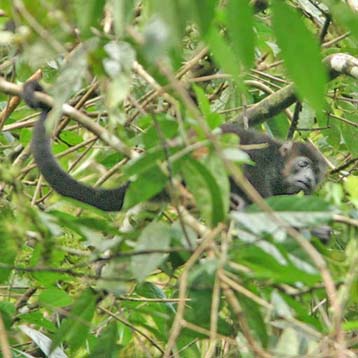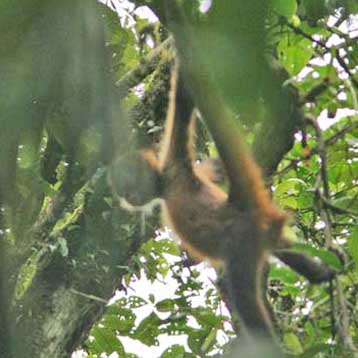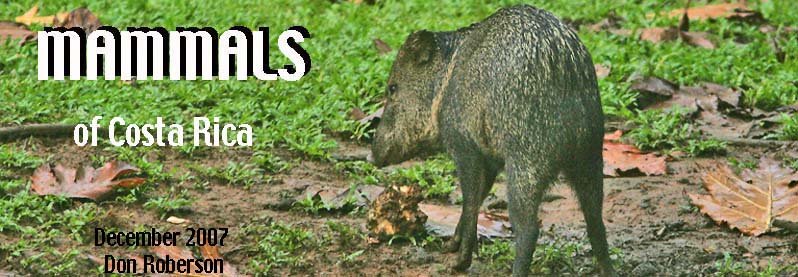
La Selva 18 Dec 2007
| During our birding trip to Costa Rica in Dec 2007, we were very interested in locating and photographing mammals, at least diurnal ones. The absolutely fabulous new field guide (Wainwright 2007) added to our interest. We managed to find a nice selection of more common species, but did not have the luck to encounter cats, anteaters, or tapirs. Those will have to await other trips. | ||||||
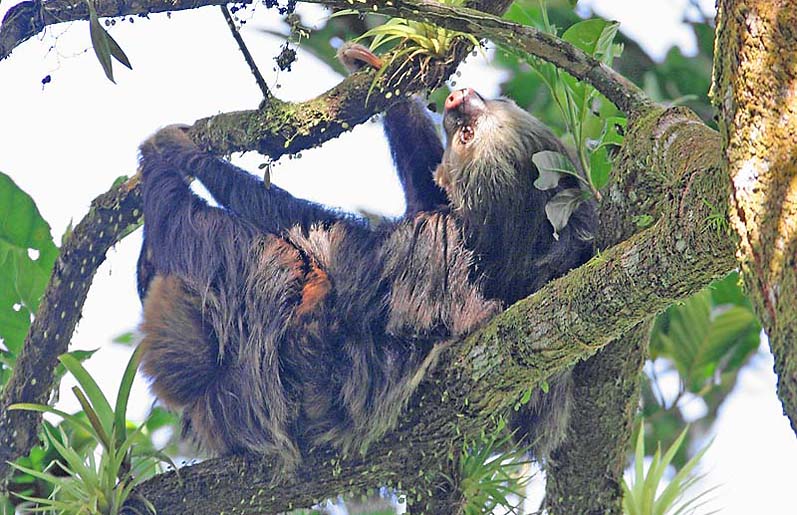 |
||||||
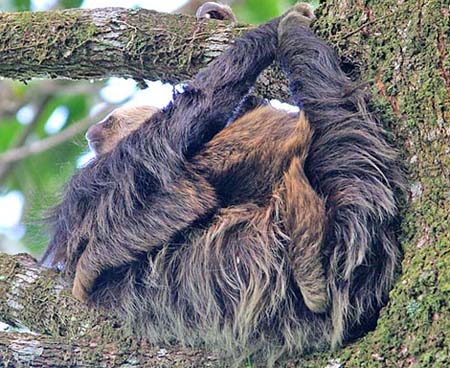 We very much wanted to find a sloth during the trip, and these desires were fulfilled. We saw three different Hoffman's Two-toed Sloth,
including this mother (above) and baby (right). Alex Martinez, the
owner of Posada Andrea Christina in Puerto Viejo de Sarapiqui, told us
that she lived on the grounds of this bed & breakfast. We kept
checking every day until this one day Rita spotted her. We got these
photos then, but by the next day she must have changed trees and we
never found her again. The baby clings to its mother for 5 months, and
may stay near for up to 2 years. This species is mostly nocturnal, but
does visit different trees to acquire a variety of leaves for its diet.
This is a species that ranges from Honduras to Bolivia. I had seen it
once before in Ecuador. We very much wanted to find a sloth during the trip, and these desires were fulfilled. We saw three different Hoffman's Two-toed Sloth,
including this mother (above) and baby (right). Alex Martinez, the
owner of Posada Andrea Christina in Puerto Viejo de Sarapiqui, told us
that she lived on the grounds of this bed & breakfast. We kept
checking every day until this one day Rita spotted her. We got these
photos then, but by the next day she must have changed trees and we
never found her again. The baby clings to its mother for 5 months, and
may stay near for up to 2 years. This species is mostly nocturnal, but
does visit different trees to acquire a variety of leaves for its diet.
This is a species that ranges from Honduras to Bolivia. I had seen it
once before in Ecuador. |
||||||
|
||||||
|
||||||
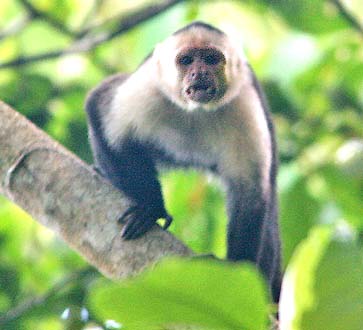 We
saw 3 of the 4 species of monkey found in Costa Rica, and I managed
marginal shots of all. All were in the forest, were quite shy and/or
upset with us as human observers, and thus presented a significant
photographic challenge. During my first encounter with White-faced Capuchin
(right & below) in the forest at Rio Tigre, and shooting dozens of
photos, I was happy only with this one shot of a monkey in mid-leap
(below). On our final morning there, a troop of capuchins passed
through the canopy right over our hut. They seemed annoyed to find us
there, and one even threw branches (!) in our direction. Might have
been this one (right). We
saw 3 of the 4 species of monkey found in Costa Rica, and I managed
marginal shots of all. All were in the forest, were quite shy and/or
upset with us as human observers, and thus presented a significant
photographic challenge. During my first encounter with White-faced Capuchin
(right & below) in the forest at Rio Tigre, and shooting dozens of
photos, I was happy only with this one shot of a monkey in mid-leap
(below). On our final morning there, a troop of capuchins passed
through the canopy right over our hut. They seemed annoyed to find us
there, and one even threw branches (!) in our direction. Might have
been this one (right). |
||||||
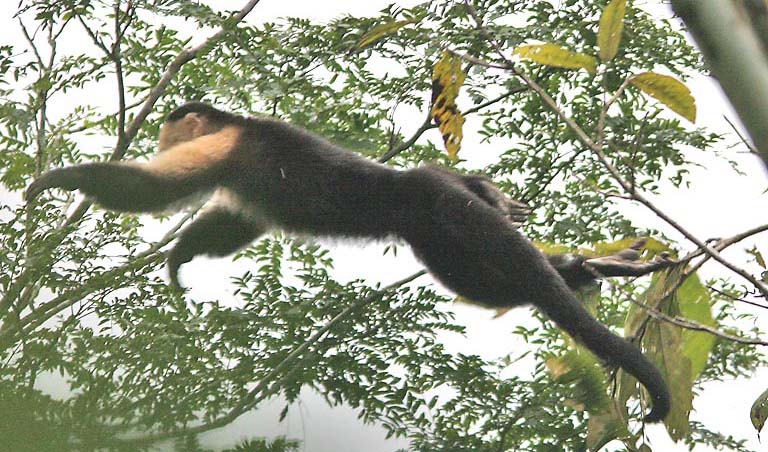 |
||||||
| Our other two primates were in the forest at La Selva, and troops of both stayed well up in the canopy. Of course we heard Mantled Howler (below left) daily in the lowlands, but seeing them can be difficult. A few quickly disappearing shapes was the usual fare. The Central American Spider Monkey (below right) is very arboreal, and moves rapidly with swings of their long arms, helped by the prehensile tail. | ||||||
|
||||||
 Encounters with Collared Peccary
were limited to La Selva, but there they have become quite accustomed
to visitors. One often could smell their pungent odor before seeing
them in the forest, or crossing the trail, but they seemed entirely
unconcerned with us. This one (right) have found something to eat right
within the main compound, just over the bridge from the entrance
headquarters, and permitted long observation and video. Encounters with Collared Peccary
were limited to La Selva, but there they have become quite accustomed
to visitors. One often could smell their pungent odor before seeing
them in the forest, or crossing the trail, but they seemed entirely
unconcerned with us. This one (right) have found something to eat right
within the main compound, just over the bridge from the entrance
headquarters, and permitted long observation and video. |
||||||
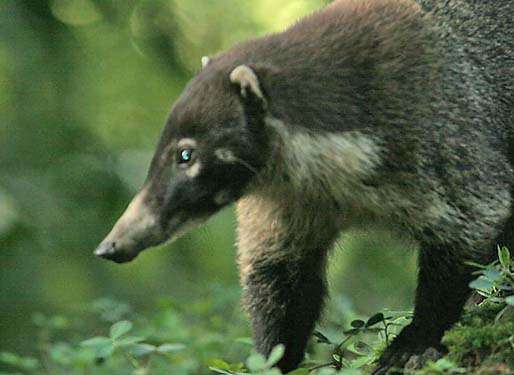 We had but one encounter with White-nosed Coati
(left) but it was memorable. A band of about 30 suddenly appeared at
roadside during our drive with Alex Martinez to the hummingbird feeders
at Mirador Cinchona, and they caused an animal 'traffic jam' recalling
the old days at Yellowstone National Park when I was a kid. Cars were
suddenly parked every which way along the narrow winding road, with
folks pouring out with cameras or food. We stayed in the car; this shot
was from the window. We had but one encounter with White-nosed Coati
(left) but it was memorable. A band of about 30 suddenly appeared at
roadside during our drive with Alex Martinez to the hummingbird feeders
at Mirador Cinchona, and they caused an animal 'traffic jam' recalling
the old days at Yellowstone National Park when I was a kid. Cars were
suddenly parked every which way along the narrow winding road, with
folks pouring out with cameras or food. We stayed in the car; this shot
was from the window. |
||||||
Literature cited:
|
INTRODUCTION TO COSTA RICA TRIP Dec 2007 |
|
Atlantic Lowlands LA SELVA |
|
Montane Cloud Forest SAVEGRE |
HERPS Reptiles & Amphibians |
Pacific Lowlands RIO TIGRE |
ODES Dragonflies & Damselflies |
Complete TRIP LIST with birds, mammals & herps |
|
page created 19-20 Jan 2008
|
© Don Roberson 2007 |
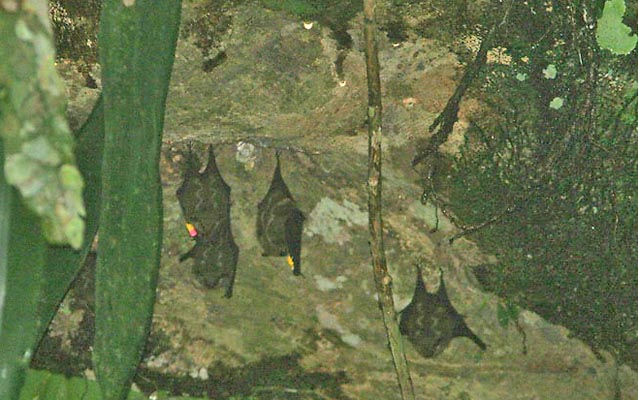
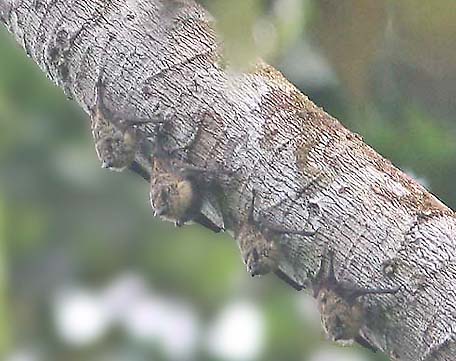
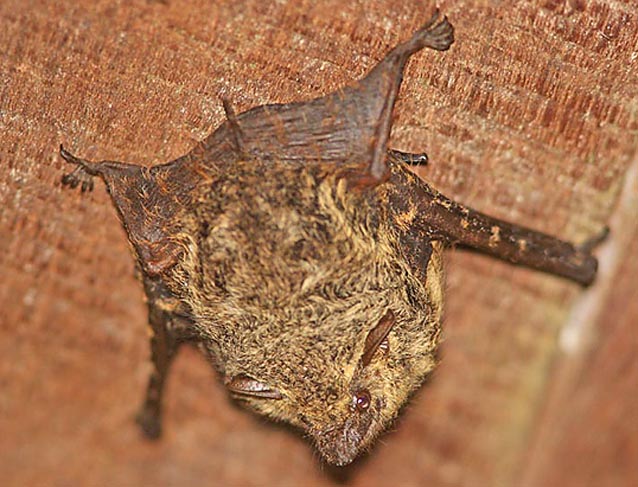
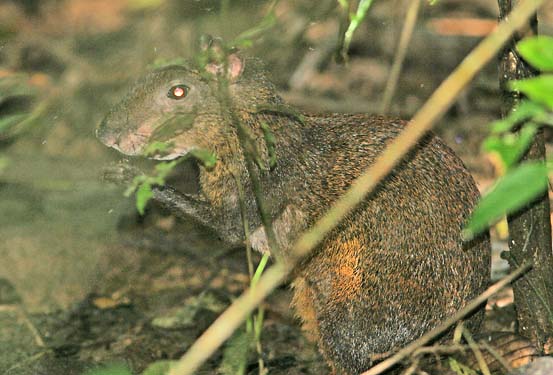
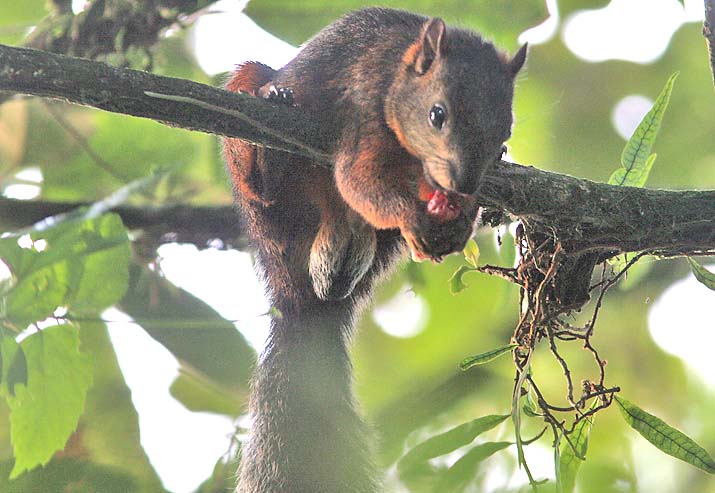
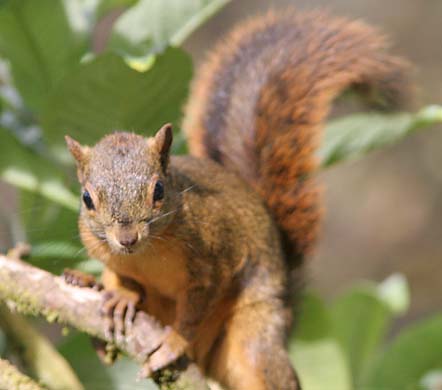 I was very pleased to locate and photograph 3 of the 5 squirrels that occur in Costa Rica. The widespread lowland species is Variegated Squirrel
(above). Body pelage varies widely throughout the county, from red to
black to white, but the tail is always gray. This one lived in the
trees in the courtyard of Posada Andrea Christina, Puerto Viejo de
Sarapiqui. Another subspecies was seen at Rio Tigre.
I was very pleased to locate and photograph 3 of the 5 squirrels that occur in Costa Rica. The widespread lowland species is Variegated Squirrel
(above). Body pelage varies widely throughout the county, from red to
black to white, but the tail is always gray. This one lived in the
trees in the courtyard of Posada Andrea Christina, Puerto Viejo de
Sarapiqui. Another subspecies was seen at Rio Tigre. 